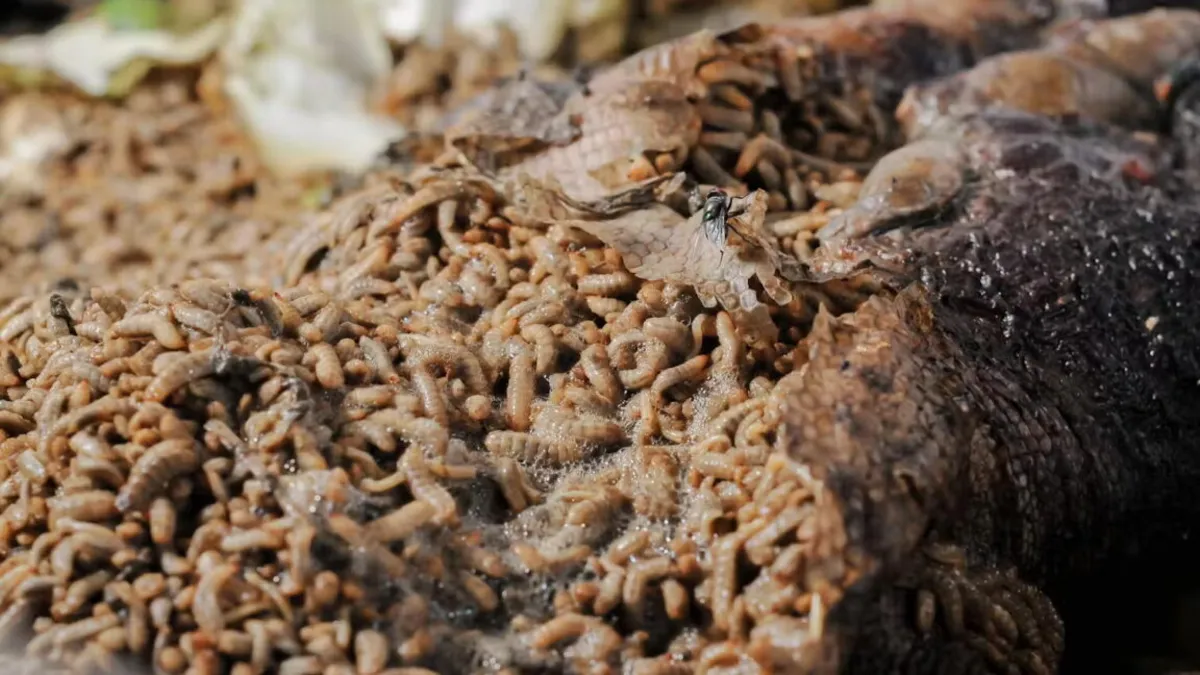
For years, scientists have believed that Neanderthals were primarily carnivorous, consuming a diet rich in meat akin to that of apex predators like lions and hyenas. This perception was largely based on chemical analyses of Neanderthal remains, which indicated high levels of meat consumption. However, recent findings suggest that hominins, including Neanderthals and our own species, are more accurately classified as omnivores, incorporating a variety of plant foods into their diets alongside meat.
While it is possible for some human populations, such as the Inuit, to thrive on a primarily animal-based diet, hominins cannot sustain the high protein levels that hypercarnivores consume without adverse effects. Prolonged consumption of excessive protein can lead to a condition historically known as “rabbit starvation,” which can be debilitating or even fatal. This raises the question: what explains the chemical signatures in Neanderthal bones indicating they consumed massive amounts of meat?
As an anthropologist studying ancient diets, I analyze elements like nitrogen to understand what our ancestors consumed. The ratios of different nitrogen isotopes—specifically nitrogen-14 and nitrogen-15—provide valuable insights. The ratio of nitrogen-15 to nitrogen-14, denoted as δ¹⁵N, increases as one moves up the food chain. For instance, grass has a low δ¹⁵N value, while carnivorous animals exhibit the highest ratios. By examining these stable nitrogen isotope ratios, we can reconstruct the diets of Neanderthals and early Homo sapiens during the late Pleistocene, approximately 11,700 to 129,000 years ago.
Fossils from various archaeological sites consistently show high δ¹⁵N values in these ancient hominins. Typically, such high values would categorize them as apex consumers alongside hypercarnivores. However, this led us to consider whether another factor could be inflating the δ¹⁵N values observed in Neanderthals.
Our research proposes that maggots, the larvae of flies, could be a significant yet overlooked source of enriched nitrogen-15 in the Neanderthal diet. Maggots are nutrient-rich, easy to gather in large numbers after an animal is killed, and can serve as a vital food source. To explore this hypothesis, we utilized a dataset initially created for forensic anthropology, aiming to understand nitrogen changes during decomposition.
Our findings revealed that as muscle tissue decomposes, stable nitrogen isotope values rise modestly. More significantly, maggots feeding on decomposing tissues showed a dramatic increase in δ¹⁵N values, ranging from 5.4 permil to 43.2 permil—nearly four times higher than values estimated for Pleistocene herbivores. This suggests that the high δ¹⁵N values attributed to Neanderthals could be partly due to their year-round consumption of nitrogen-15 enriched maggots found in cached or preserved animal foods.
In 2017, my collaborator, John Speth, suggested that Neanderthals’ elevated δ¹⁵N values might stem from consuming putrid or rotten meat, drawing on historical evidence from northern Arctic foragers. Indigenous cultures often regard decomposed, maggot-infested animal foods as highly desirable rather than as starvation options. They frequently allowed animal foods to decay to the point of being crawling with maggots, a practice that early European explorers found repulsive, yet Indigenous peoples considered a delicacy.
This cultural perspective may provide insight into the dietary habits of Neanderthals. They practiced butchering, storing, and cooking various foods, enriching their diets with items that non-hominin carnivores typically do not consume. Research indicates that δ¹⁵N values are often higher for cooked foods and putrid tissues, and our study aligns with this, showing that maggots feeding on decaying tissues can significantly elevate nitrogen isotope ratios.
While our research highlights the potential role of maggots as a nutrient-rich food source for Neanderthals, it does not claim that maggots alone account for their high δ¹⁵N values. Several questions remain unanswered. For example, how many maggots would need to be consumed to elevate δ¹⁵N values beyond what would be expected from meat alone? Additionally, how do the nutritional benefits of maggots change over time as food items are stored?
Further experimental studies exploring the changes in δ¹⁵N values of foods processed and stored according to traditional Indigenous practices could offer deeper insights into the dietary habits of our ancient relatives. Understanding the complexity of Neanderthal diets, including the role of maggots, can significantly advance our knowledge of their survival strategies and cultural practices.
Melanie Beasley is an assistant professor of anthropology at Purdue University. This article has been republished from The Conversation under a Creative Commons license. Read the original article for more in-depth insights.